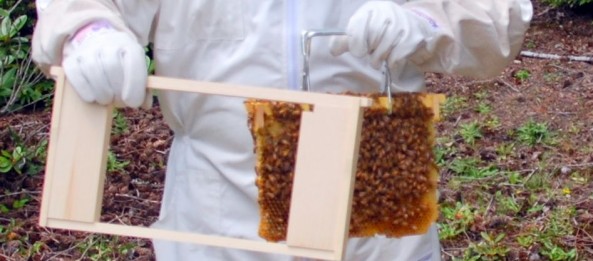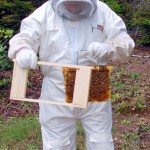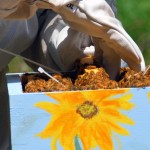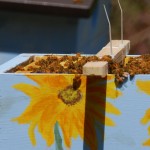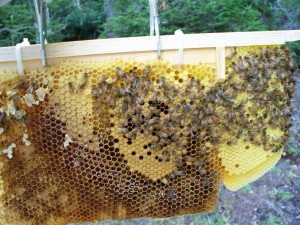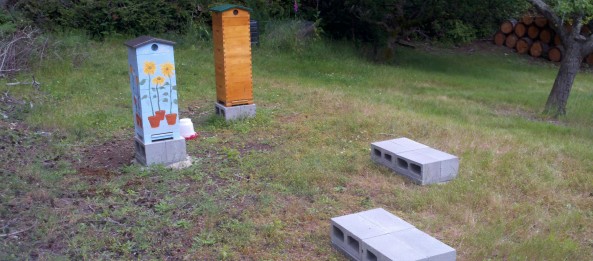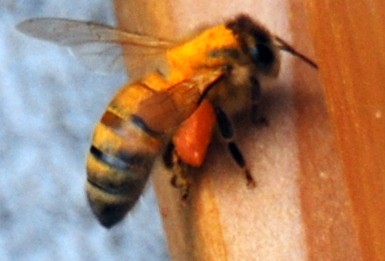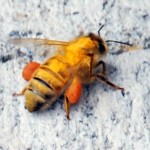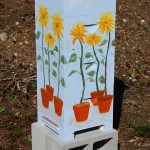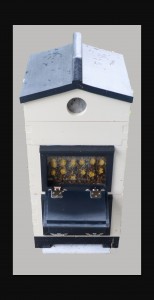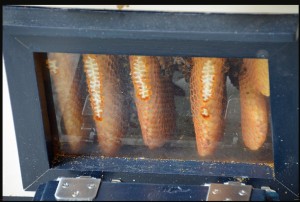Driving of the drones, the movie
Each year the drone bees are driven from the beehive in preparation of winter. Since the males serve no purpose to the hive other than mating services, as winter approaches they are quickly identified as consumers and are driven away to preserve the food set aside for winter.
Some specifics of a drone bee:
The drones are male
They are larger than the female
The drone typically has a dark or black abdomen
Only about 2 to 4% of the total hive population is male
The drones have large eyes
The main function of a drone bee is to mate with a queen bee. Since mating happens “on the wing” the large eyes allow a better chance for the male to spot the queen in the air so that he might mate with her. This is his only function. The drone bee does nothing in the hive, no house keeping, rearing of the young or foraging. In fact the male does not even have a stinger. A honeybee hive is a female dominated society.
What you will see in the video:
Bees coming and going
Some of the bees will be carrying pollen in the pollen baskets on their rear legs.
The largest bees are the male or drone bees.
You will see the females chasing drones out of the hive or over the edge of the landing platform.
You will see females riding the drones, though they typically do not sting the drones they are known to damage the drones wings and inflict damage on them that will disable them.
It is not uncommon to see females drag undeveloped male larvae out of the nest as fall approaches.
The driven drone will usually only last a few days outside of the hive. The cooler temperatures, predatory birds and other insects will typically aid in the final chapter of a drones life. It is not until next spring that the queen will once again begin laying male eggs to begin the cycle anew.
Watch carefully as the large male bees are escorted, driven, herded and cajoled out of the hive by the females.

